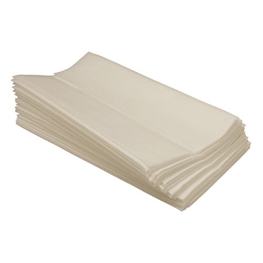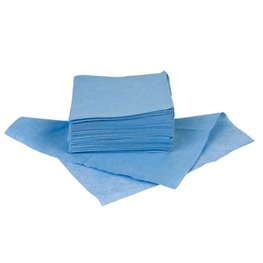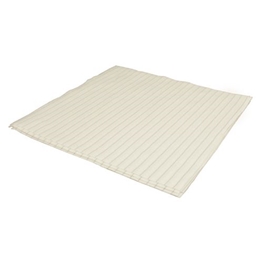
Techclean Purwipe
100% polyester, strong & lint-free wipe
FAQ's
- Use the right materials: Select appropriate wiping materials that are compatible with the cleanroom environment. Common materials include non-woven wipes, microfiber wipes, and polyester wipes. They should have low particle generation, low linting, and be free from contaminants.
- Wear proper cleanroom attire: Before starting any wiping procedure, ensure you are wearing the appropriate cleanroom garments, including gloves, a gown, and a face mask, to prevent the introduction of particles and skin oils.
- Prepare the wiping solution: If a wiping solution is necessary, use a cleanroom-approved cleaning agent. Some cleanrooms use isopropyl alcohol or other specialized cleaning solutions. Ensure the solution is properly diluted according to the manufacturer's recommendations.
- Follow a wiping pattern: Adopt a systematic wiping pattern to ensure complete coverage of the area. Start from the cleanest area and work towards the dirtier zones. Avoid cross-contamination between different surfaces.
- Use gentle pressure: Apply only light pressure while wiping to avoid damaging sensitive surfaces or releasing particles into the air.
- One-directional wiping: Whenever possible, use one-directional wiping, moving from one side to the other, to prevent particles from being redistributed.
- Change wipes regularly: Replace wipes frequently to avoid spreading contaminants. Dispose of used wipes properly according to cleanroom protocols.
- Avoid wiping overhead surfaces: Wiping overhead surfaces can release particles downward, contaminating lower surfaces. Use alternative cleaning methods for these areas.
- Follow cleanroom class-specific protocols: Different cleanrooms have different cleanliness classifications (ISO Class 1 to 9, for example), each with its specific protocols. Ensure you follow the appropriate procedures for your cleanroom class.
- Perform regular training: All cleanroom personnel should receive proper training on cleanroom wiping techniques to ensure consistency and effectiveness.
Solvent compatibility is another factor to consider when choosing a wipe. If the wipe is to be used with a solvent in the cleaning application, then the wipe must be selected with the solvent in mind. Solvent retention and absorbency may also be required. The wipe must the able to absorb a given solvent and retain the solvent within the fabric of the wipe for a sufficient amount of time, without premature release of the solvent. Knitted polyester and nylon wipes have the highest compatibility with a wide range of organic solvents and weak acids. Techclean Purwipes and Anti-Static Wipes have good absorbency, excellent durability when cleaning rough surfaces, and low ionic and organic residue contamination. The polyester/cellulose blended Techclean Wiper and Blue Maintenance Wipes have excellent resistance to solvents and weak acids, good durability when cleaning rough, abrasive surfaces, high particle entrapment and low particle and ionic contamination. They are an economical choice for general cleaning and spill clean-up.
Any wipe will produce particulates depending on the amount of abrasion it receives in use, so abrasion resistance should be considered. Wipes usually release the most particulates from their edges, so using a sealed-edge wipe will greatly reduce the particulate burden. Heat cutting is a common method of creating a sealed edge. A hot knife cuts the edge and simultaneously fuses all the loose ends on the wipe, as in the Techclean Purwipe sealed edge poly wipes. The texture of the wipe should also be considered when critical or sensitive surfaces are involved in the application. Some wipes can abrade some critical coated optical surfaces and should therefore be avoided in such applications. TechClean Twill Wipe (2357-100) is a knit cotton wiper that is also very good on abrassive surfaces.







